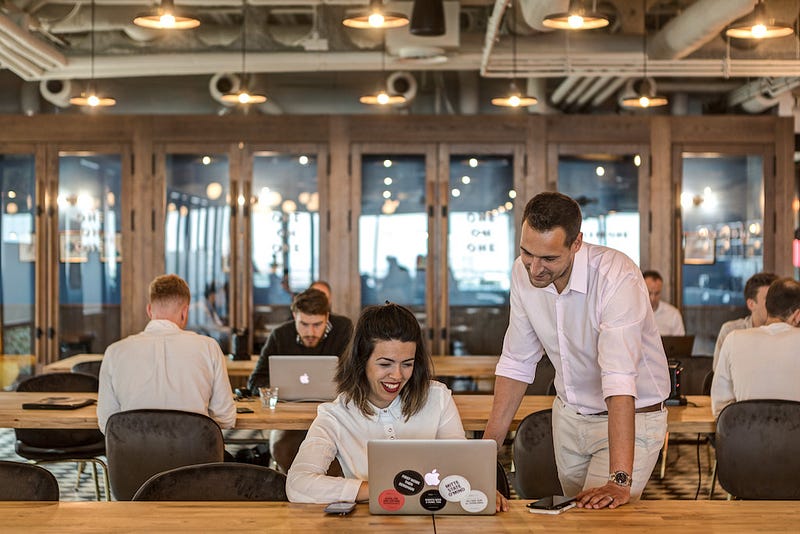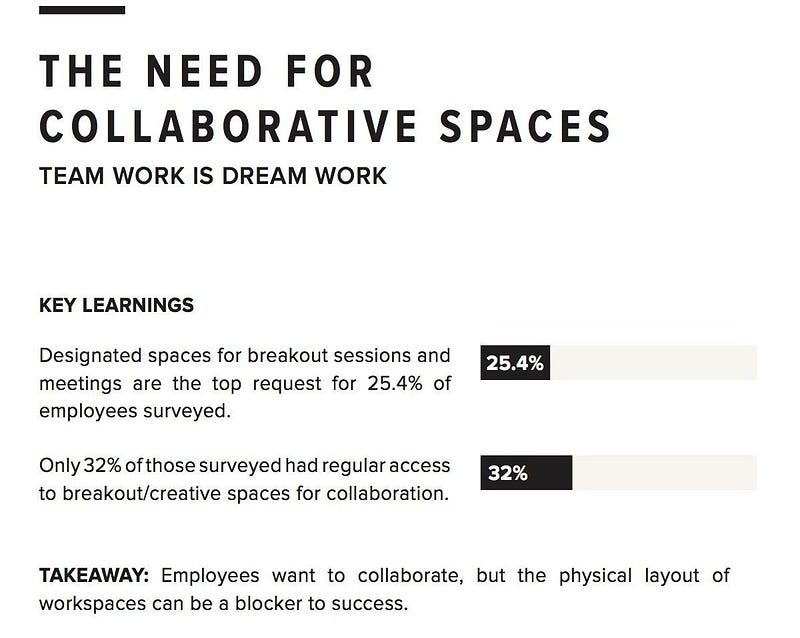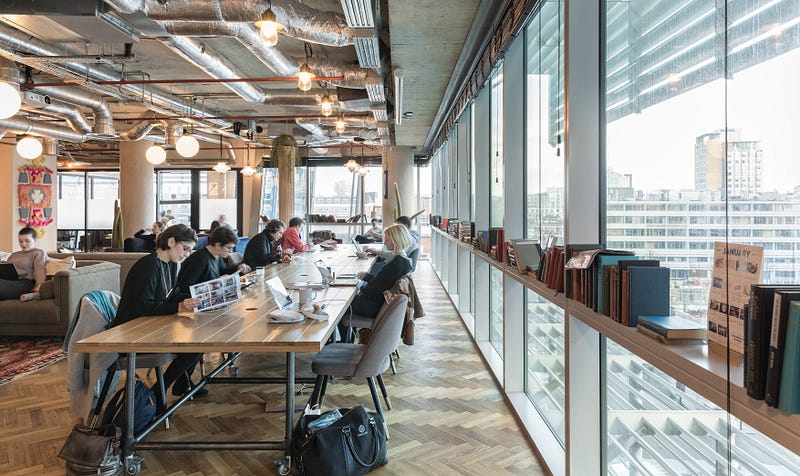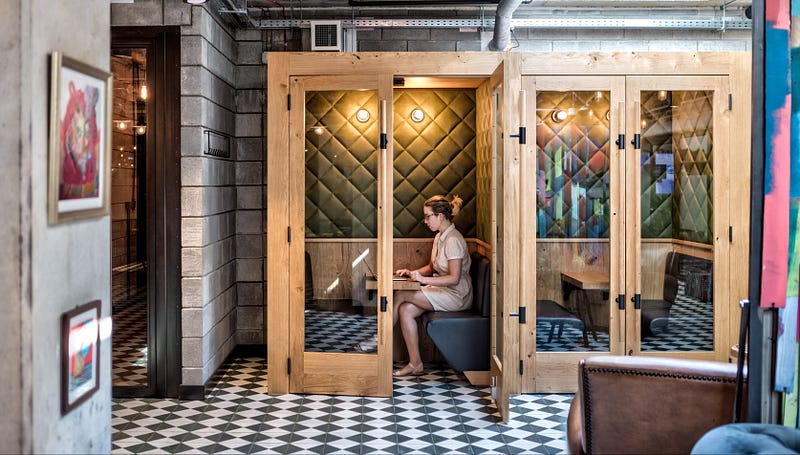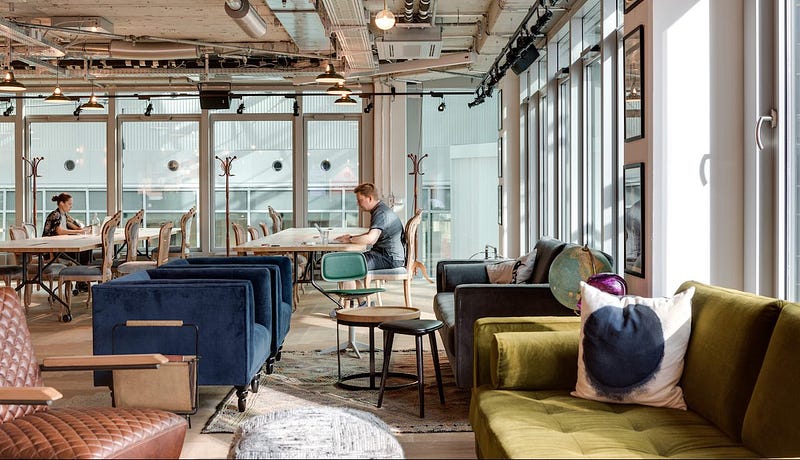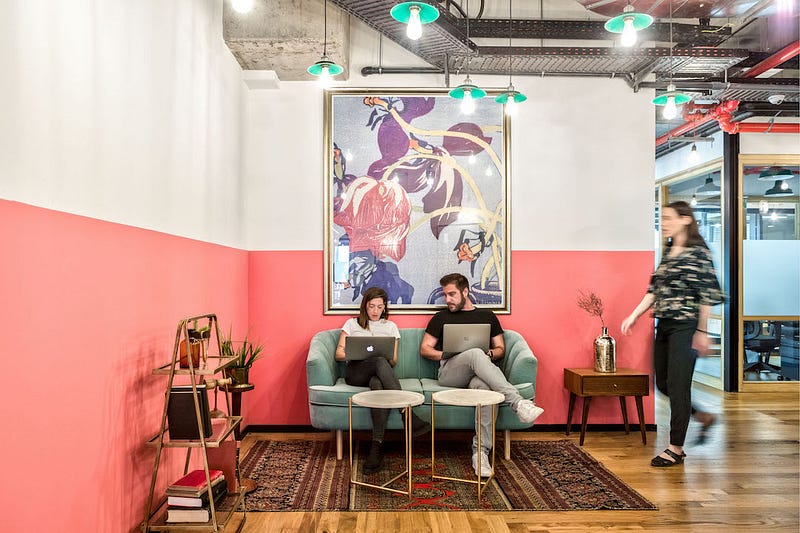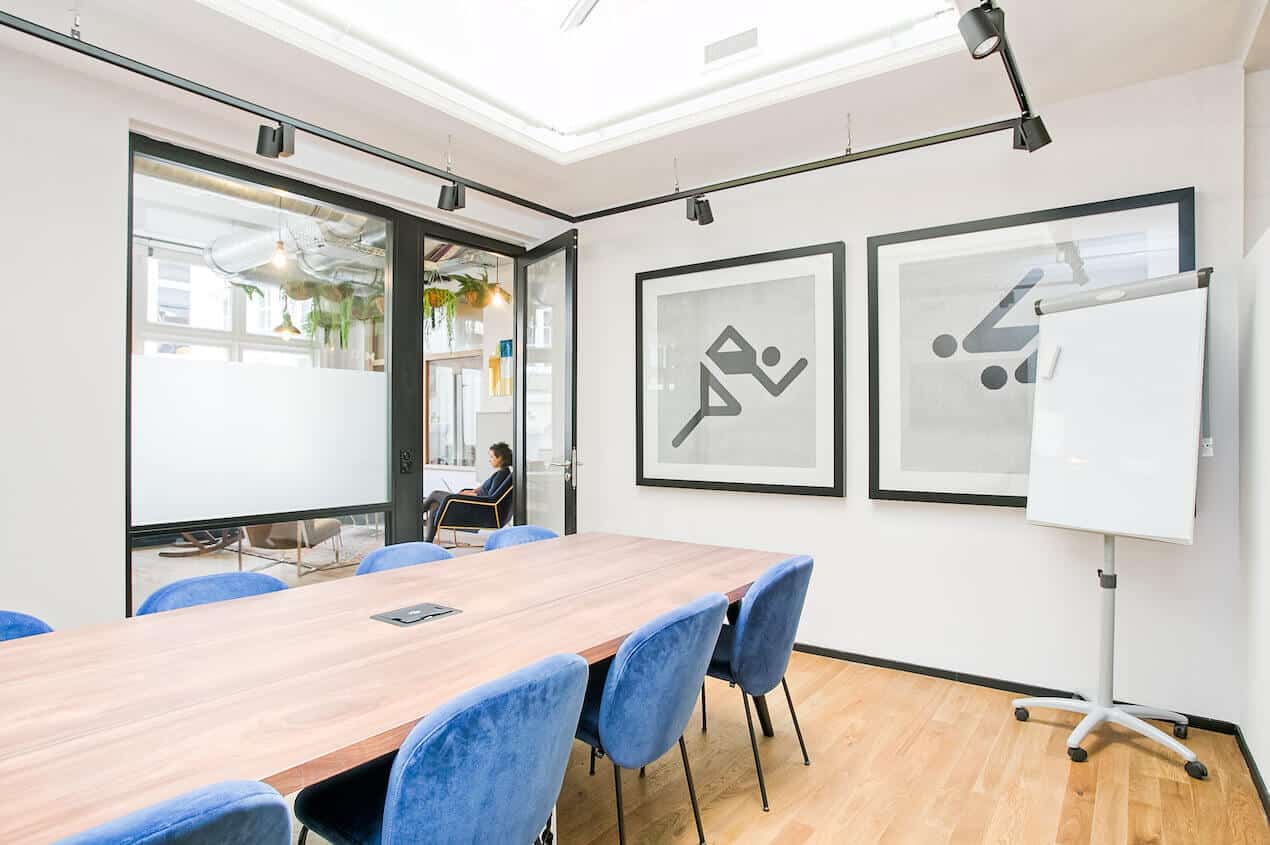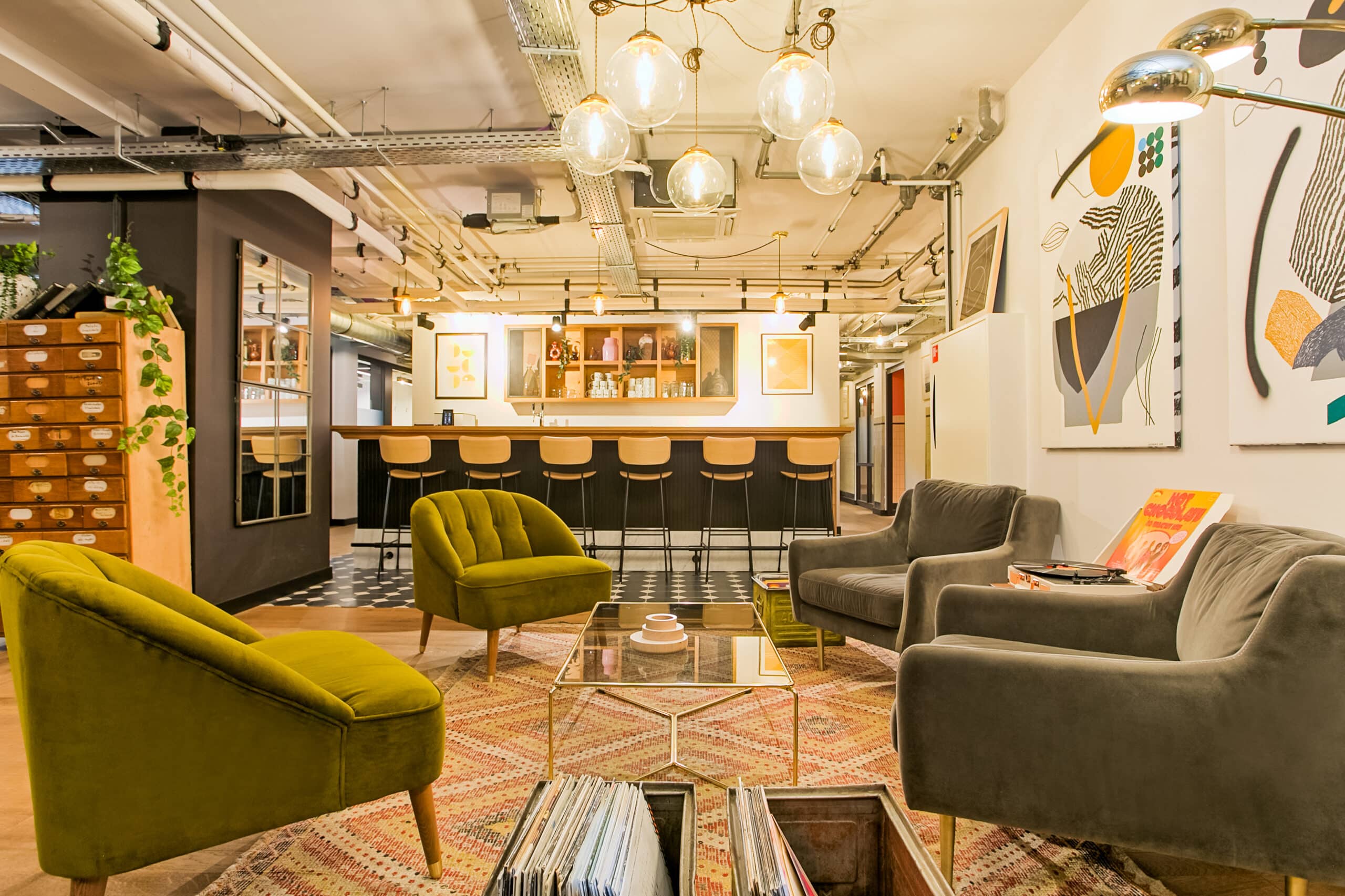5 Workspace Improvements That Boost Employee Productivity
Areas of improvement at work
Fresh Report on Office Worker Needs uncovers what you can do to keep your teams satisfied and productive
Traditional office spaces are transitioning through a renaissance movement. This is an era that truly values the employee experience, ensuring the work environment is a place where people want to be. The world’s leading companies have taken this philosophy to heart, tackling it as one of their core initiatives. Drawing on employee feedback and proactively experimenting with floor plans, these companies are dedicated to designing smart workspaces-ones that forge the link between the workspace, employee satisfaction, and productivity.
While a “smart workspace” may sound like an intimidating endeavor requiring intricate algorithms, AI, BI, outside consultants and maybe even Sundar Pichai himself, it’s really not that complicated. Here’s the secret: Designing a smart workspace comes down to giving employees more choice. Letting employees decide where they want to work, how they want to work, and in what they can expect from their company to get their work done. Choice demonstrates trust, while encouraging autonomy, growth and creative solutions. From redefining the function of spaces to investing more in employee well-being, you can seamlessly integrate choice in your work environment as a means to empowering employees and maximizing their productivity.
Here are five ways to get started:
1. Promote Employee Collaboration
Employees want to collaborate with one another, but often lack the space in which to do so effectively. According to our 2018 Workplace Productivity Report, the top requested workplace feature for over a quarter of the employees surveyed (26.4%) was a designated space for collaborative work. Smart workspace design, which helps enhance productivity through coworking, requires flexibility and adaptability in order to meet the needs, work styles and types of tasks that modern employees have to accomplish.
You can design workspace for increased collaboration. Collaborative spaces satisfy the immediate need for meeting rooms or group work, but they also have lasting long-term benefits. Defining collaborative spaces in your floor plan shows that you value and welcome collaboration among employees. Additionally, it offers employees an alternative location to their desk to complete tasks, creating new opportunities for employees to connect and build relationships with one another. Designated break-out rooms, open lounge spaces, and green space areas are just some of the ways modern workspaces are promoting greater teamwork.
2. Enable Focus of Employees for more Workspace Productivity
Employees have their own work modes, at which they function at optimal efficiency. Some employees find their flow in noisy common areas, while others need space for quiet-free of all the distractions that come along with a typical 9-to-5. Numerous offices have adopted more open floor plans (per point 1 above), making it increasingly more difficult for employees to work in relative quiet at their desks and avoid the parade of interruptions from random colleagues (which is the #1 work distraction according to the Report).
To counter the noise, employers can add designated “silent work areas” or “quiet zones” to their floor plans — as desired by 25% of respondents surveyed. This trend reflects the rise of the quiet space in coworking, where individuals can fully immerse themselves in focused tasks without disturbances. These quiet zones should be respected and maintained as such, meaning no phone calls, no one-on-ones, no water cooler conversations. Different work and different employees require different levels of focus. The quiet zone is the place to accommodate this-sans noise, sans distraction. Respect the sound of silence and help employees beat the afternoon slump and stay productive.
3. Invest in Business Ergonomics
What are “business ergonomics?” Quite simply, think of the term as the physical work environment, and its impacts on worker experience. Think office furniture, to technology, to the type of lighting and ability to control room temperature. Business ergonomics are a huge contributor to the improvement employee well-being. Think about it. If you’re not physically comfortable, how productive can you really be?
According to the Report, the top improvement employees wanted to see in their workspace was comfortable furniture (39.6%). A quarter of respondents said they wanted better lighting. Comfortable office furniture and better lighting are just the tip of the business ergonomics iceberg, the bare minimum for any employer. Those of you who have the budget to go beyond the basics, the same study showed employees wanted more outdoor areas, green spaces, lifestyle perks, as well as tasteful art in the work environment. Additionally, standing desks boost productivity too, providing a versatile solution to further enhance employee well-being and performance.
Considering how office design improves productivity, it’s evident that creating a comfortable and ergonomic workspace is crucial for enhancing employee well-being and their ability to perform at their best.
To better meet the needs of your specific employees, open the lines of communication with a survey or candid dialogue. While it’s unlikely you’ll be able to use your Series A funding so everyone can reap the rewards of a treadmill desk, there’s probably a lot you could still do to improve the experience. Listen to what your employees have to say and try to strike a balance with their requests and your budget. It’s critical to have a pulse of employee pain points and work towards resolving issues before they pervade your company culture.
4. Get the Little Details Right
The OnePoll survey also asked employees how they would characterize their workspace environment. Nearly a third of respondents (32.8%) described their offices as “boring” or “lacking atmosphere”. Moreover, nearly a quarter of respondents (23.6%) had actually rejected a job offer in the past, because they felt the workspace of a prospective employer had poor design/layout or lacked adequate amenities.
We’re all familiar with the adage, dress for success. Now, this notion is just as applicable to the modern workspace. The moment a candidate walks into your workspace, your company’s values and identity are being evaluated. How you “dress” the walls, common areas, etc. are a direct reflection of what you value as a company and shape your overall identity. This is the first impression your company gets to make when recruiting employees. What kind of mental snapshot do you want them to take away when they think about your company?
5. Embrace Flexibility in every aspect
Employees want flexibility from their employers. OnePoll’s survey found that today’s employees are more mobile than ever before. As an alternative to the office space, they’re working from home, in coworking spaces such as our coworking Wynwood, and even in coffee shops. Additionally, a third of employees surveyed wanted 24/7 access to their offices, so they could create their own schedules.
This is where choice can be empowering. Giving employees the freedom to choose where to work, and when to work is a major factor contributing to employee satisfaction. Employers need to adopt non-traditional work environments, as well as flexible scheduling to attract new talent and ensure employee retention.
The workplace renaissance is here to stay. While the lion share of the burden may rest on employers, embracing a “smart workplace” design will create happier, more productive employees long term. Like any entrepreneur or innovator will say, you have to iterate, make changes, adapt and evolve. Implementing changes to the work environment is the same. It’s a process. There will be challenges. There will be mistakes. There will be successes. But in the end, it’ll all be worth it. Exploring various strategies, such as incorporating ergonomic furniture, optimizing lighting, considering spatial layout, and even recognizing how music improves productivity, is crucial.
Click here to gain more actionable insights from our recent Workplace Productivity & Satisfaction Report, conducted with OnePoll.


